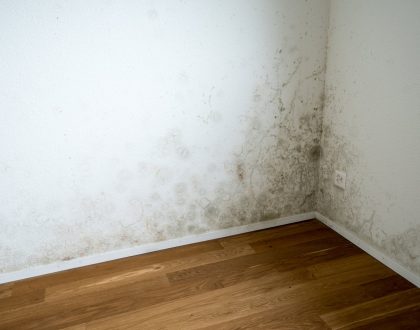Tips for Preventing Mold in Your Attic

Tips for Preventing Mold in Your Attic
Poor ventilation, leaky foundations, and other sources of moisture make your basement the ideal place for mold to thrive. But while you’re busy battling obvious mold damage in the lowest area of your house, you may be ignoring another room that you might not associate with mold: your attic.
Once mold is established inside your attic, it can be very tricky to eliminate and will require professional assistance. Here are a few tips to help you prevent mold from growing in your attic.
Inspect Your Roof
Roof damage and leaks are some of the most common causes of mold growth in your attic. Perform a visual inspection of your roof and look for curled or missing shingles, damaged shingles or flashing, loss of granules on asphalt shingles, and roof rot. Any roof damage could result in leaks that create moisture problems in your attic. Here are other signs your roof is damaged and there is a moisture problem:
– Water stains on ceiling
– Leaks and puddles inside your attic
– Mold growth on asphalt shingles
– Mold or moss growth on siding
Contact a professional roofer immediately to have any damaged repaired immediately. You should also replace your asphalt roof if it is severely damaged or if it is anywhere from 15 to 20 years old, which is the average lifespan of asphalt shingles. A good roof can help prevent mold issues in your attic.
Improve Your Attic Ventilation
Your morning showers and the summer heat are just a few of the many ways moisture will collect inside your attic. If your attic is properly ventilated, the excess warm, moist air will be eliminated and replaced by cool, dry air. This will create an ideal balance that will keep your attic dry and the air in your home more comfortable.
But if your attic ventilation is inadequate, it will create a moist environment in your attic that is ideal for mold to grow. There are several ways you can improve the ventilation in your attic, including:
– Installing intake vents on your roof soffits
– Installing additional roof vents
– Installing roof ridge vents
If there is excessive moisture inside your home and the levels inside your attic are not improving after installing additional roof vents, another good option is to install an attic ventilation fan. Several types of attic fans are available, including solar powered models, which are much less expensive to operate.
Monitor Your Attic’s Humidity Levels
You can ensure the humidity levels in your attic remain consistent with an inexpensive tool: a hygrometer. You can buy this tool at home improvement and hardware stores. Simply check the hygrometer in your attic several times a month to ensure the relative humidity, or RH, remains between 40 percent and 50 percent.
Upgrade Your Insulation
Preventing excessive moisture inside your attic is the first step in stopping mold — maintaining constant temperatures is the second. Mold flourishes in warmer temperatures and installing upgraded insulation will help keep your attic temperatures in check.
Fiberglass insulation, which isn’t biodegradable and is manufactured with small pieces of glass, resists mold growth and is the best option to prevent moisture and mold in your attic. Remove thick layers of dust from your attic insulation. Even if the product is non-biodegradable, mold can grow on a layer of dust that is very thick.
Install a vapor barrier between the insulation and the attic’s inner walls. This will prevent condensation from being soaked up by the insulation. Do not store boxes next to the insulation. This will prevent it from drying, if there is any moisture in your attic.
Taking the steps to prevent mold in your attic will protect your family’s health and your pocketbook. If you have any additional questions, contact the professionals at DRC Cleaning Solutions.
Recommended Posts

Flood Damage? 3 Longer Term Challenges to Prepare For
June 29, 2019

Fire Prevention Tips for Landlords and Property Owners
June 29, 2019

What Next? 6 Steps to Take After a House Fire
June 29, 2019
